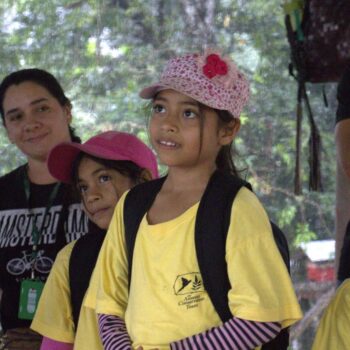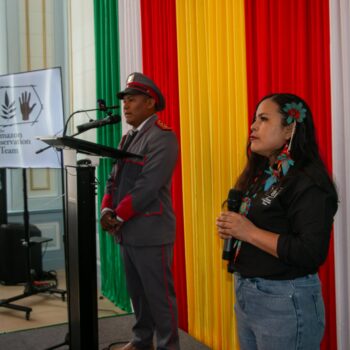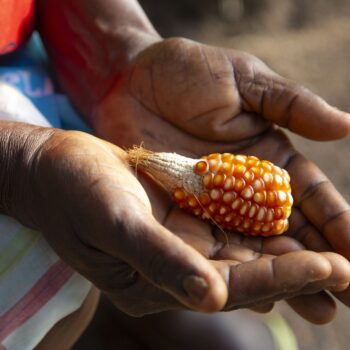Share this post
El Espectador
Environment
July 18, 2017 – 10:41 PM
PABLO CORREA / Oscar García (infographic)

40 clans, composed of 1,423 people comprising 332 families, live in the two reserves. The majority of them belong to the Murui Muina people. / Photos: Juan Gabriel Soler
In 2013, Alirio Ortiz, a Cuemaní traditional healer, and Carolina Gil, the director of the Amazon Conservation Team in Colombia, met in a coffee shop in the municipality of Solano, Caquetá. From this “nice conversation,” as Gil recalls, came the idea of collaborating to make the dream of expanding the reserves—inhabited by 40 clans, the majority of the Murui Muina people—a reality. (Photos: Juan Gabriel Soler)
This week, they received the good news. All of these efforts over the course of four years—field trips, discussions, paperwork, and bureaucracy—had finally borne fruit.

With this decision, the country takes a further step in safeguarding the Amazon. The two reserves now constitute a natural bridge that connects the Chiribiquete National Park, the country’s largest, with the Predio Putumayo, Colombia’s largest indigenous reserve. Together, the three reserves and the park make up 10 million hectares of protected areas—an expanse of forest as large as Portugal.

"It was hard work, and it is a big bet in terms of connectivity," says Arturo Vargas, an official of the Chiribiquete National Park, who has witnessed the harsh advance of deforestation on the park’s western border. Colombia is losing nearly 100,000 hectares of Amazon forest annually, and the main focus of deforestation is right there, next to Chiribiquete.

The Colombian Minister of the Environment, Luis Gilberto Murillo, states that this achievement is “one more example of how coordinated and inter-institutional work yields great benefits for the planet.” The effort benefitted from the participation of indigenous organization—including OPIAC, the Regional Indigenous Council of Middle Amazonas (CRIMA) and ACIBAC—as well as state institutions, and the Amazon Conservation Team, and enjoyed the financial support of the Gordon and Betty Moore Foundation and the Andes Amazon Fund.





